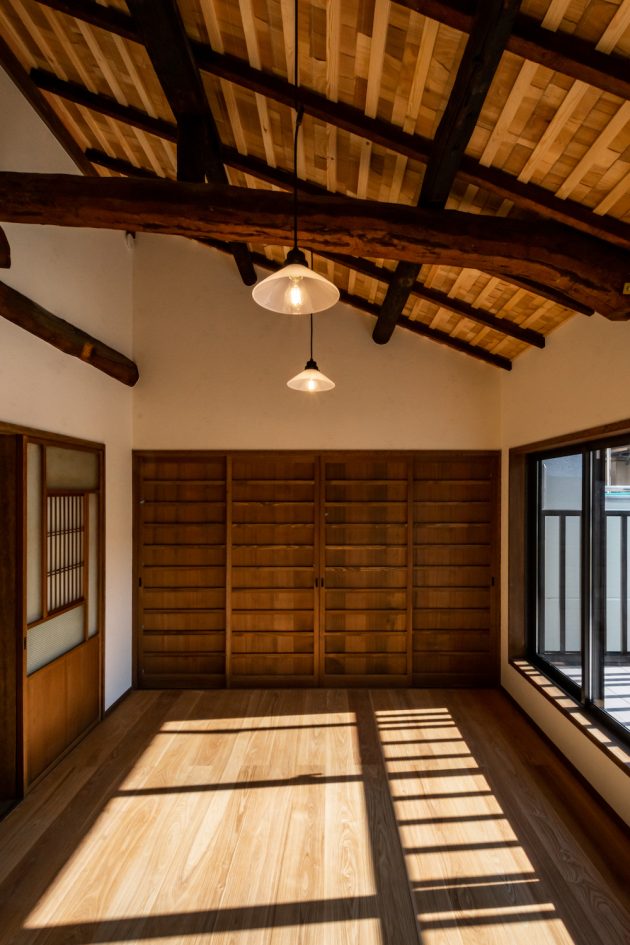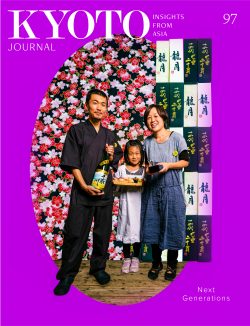Page Contents
The City of Otsu and Hachise, a realtor specialising in
machiya renovations, are exploring ways to restore Otsu’s glory as a station on the old Tokaido overland route
Kyoto Journal readers are no strangers to the allure of Kyoto, both as a place to visit and a springboard from which to dive into the wider cultures of Japan. But as Kyotoites brace themselves for the millions of tourists expected to descend on the old capital this Olympics year, the inhabitants of Otsu, a city located on the shores of Lake Biwa only ten minutes away from Kyoto by train, are merely hoping to build some momentum on their ambitious revitalization plans. Supporting the city’s effort is Hachise, a Kyoto-based realtor. Having begun specializing in the restoration of machiya traditional town-houses in the early 2000s, when the outlook for such homes looked bleak, Hachise knows well that in order to buck a trend, someone has to be a pioneer. They have acquired a number of Otsu’s heritage homes and transformed them into beautiful, modern residences. Otsu’s story is one that in many ways has been repeated in provincial cities across Japan. Owing to its strategic location, though, it was especially prosperous in its day. Not merely an important port, Otsu was one of 53 so-called shukuba or post towns on the Tokaido, one of several trading routes established following the shogunate’s move to the Edo (now Tokyo) at the beginning of the 17th century, most famously immortalized by Hiroshige in his woodblock print series. On this busy, 500-kilometer route, Otsu was the final station where weary travelers would find respite before reaching Kyoto, their destination. In the century or so since the Tokaido fell into disuse or became overlaid with concrete, Otsu has been largely neglected, apart from an influx of people pushed out by Kyoto’s higher rents in more recent times. Sadly, this has led to opportunistic destruction of some of the city’s older heritage buildings, including machiya.
Governmental institutions, private business owners, and realtor companies all share an awareness that recent developments are slowly dismantling the cultural identity of the city. It is Otsu’s central Hyaku-cho area—so-named for having once encompassed some 100 smaller districts—flanking a stretch of the old Tokaido itself, that is at the epicenter of a new revitalization project.
Fujiwara Shuji, the Chief of the Urban Regeneration Department, says the goals are two-fold: to create new value in Otsu’s historical architecture and moreover foster a deeper appreciation for its heritage among the residents themselves. The department is based in Machiya Office Yui, a 120-year-old townhouse that also functions as an effective coworking space that anyone can come in and use. “It was not just about setting an example by repurposing an abandoned property ourselves,” Fujiwara explains, “we also wanted to remove barriers between us and regular citizens.” Creating an inviting atmosphere for people to walk in and exchange ideas with government employees, in Fujiwara’s view, extends even to attire: his team has dispensed with formal office wear.
One of the department’s projects is the Renovation School. Over a three-day course, participants are sent to survey some local vacant properties where, as a team, they must come up with a plan for its future. In a final presentation to the department and property owners, each business plan is judged not just on economic viability but also how it enhances the standard of living for surrounding residents. One of the successful pitches, a children’s day care facility, is set to become a reality in April this year. Fujiwara insists: “It is essential to make the most of what this city already offers. We believe that only in this way can we build a city with a unique charm.”
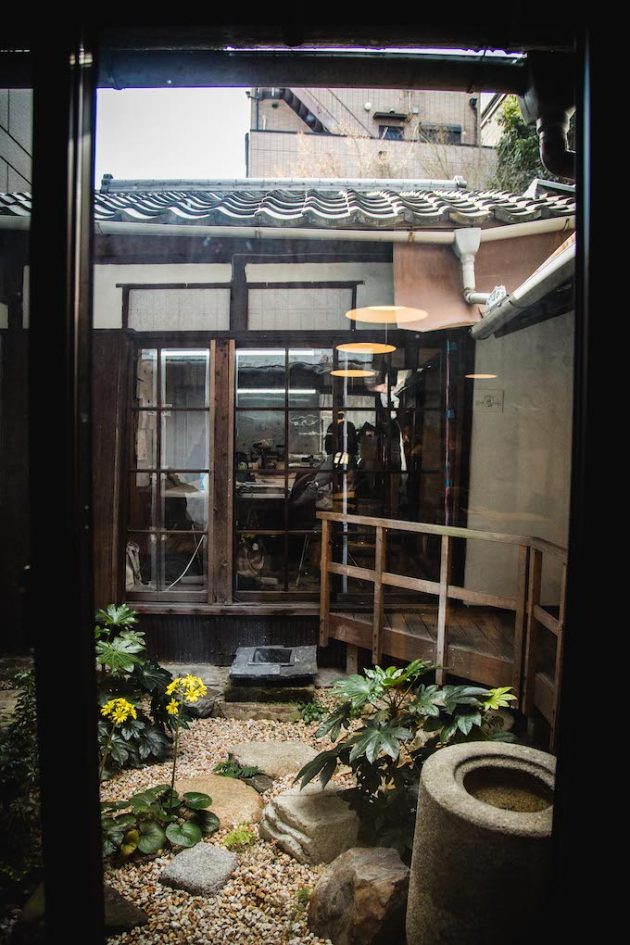
Inside Machiya Office Yui
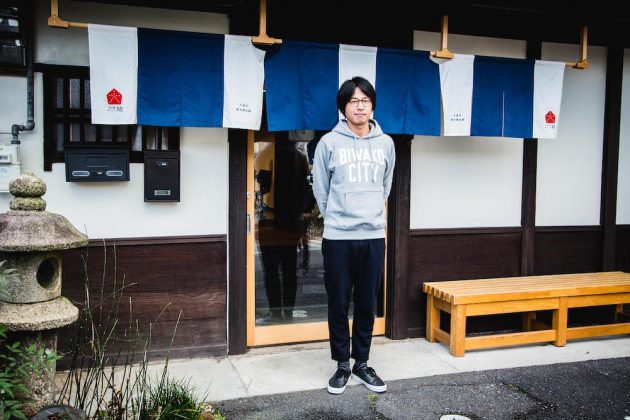
Chief of Otsu’s Urban Regeneration Department, Fujiwara Shuji, stands outside the entrance to Machiya Office Yui

The entrance to Inase, a refurbished machiya inn in the Hyaku-cho area. Along with Hotel Koo, these lodging offer an immersive townhouse experience to visitors
Just down the Maruyacho shopping street is Otsu Hyaku-cho Kan, another machiya, built in the late 19th century. For the past 20 years a citizen’s association has been meeting here, focusing on how they can contribute to preserving the old cityscape—one of their successes was a petition against the building itself being demolished, aided by a local philanthropist. The house also doubles as a museum and rental space for events and classes on the subject. Among the members, there is a consensus that preserving the local feel of Otsu is of paramount importance. “In Otsu, you can experience cultural events the way they were meant to be,” one member and former Kyoto resident, Morimoto-san says. “The Otsu Festival is essentially a smaller version of Kyoto’s Gion Festival, but unlike the Gion Festival it has maintained many practices that have died out, like throwing chimaki amulets out into the crowds from the floats. The charming karakuri mechanized dolls on the floats have become obsolete in the Gion Festival as it has become so big [and there is no way that they could be enjoyed at a distance]. Such a festival is meant to be a local affair, not a big show, and we can still experience that here in Otsu.”
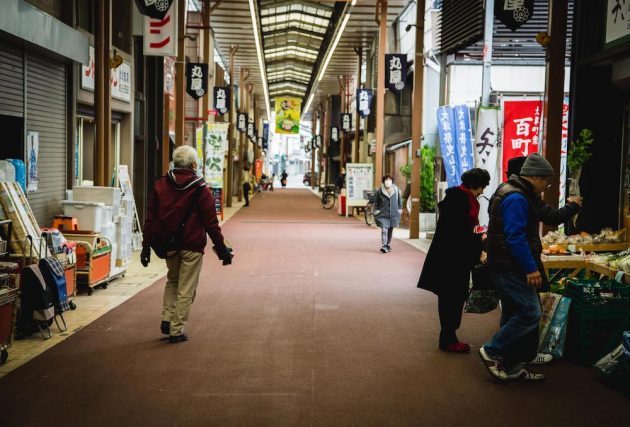
The covered arcade at Otsu Hyaku-cho
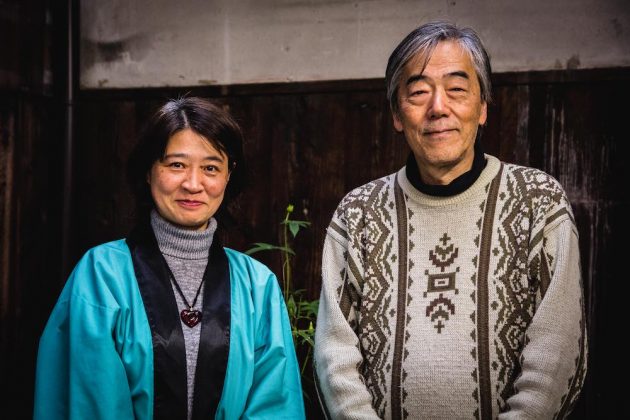
Two members of the Otsu Hyakucho Kan citizens association
Another member, Jiku-san, chimes in. For him, to live in Otsu is to experience the intimacy and community spirit only a smaller city can offer: “We appreciate our independent, small businesses that still make goods like miso paste, saké, tofu, kombu seaweed and candy on-site, which brings you closer to how life was in the old days.”
The passion of the residents and local authorities for their city is heartwarming. The question is: without further top-down intervention, will Otsu’s beloved traditions last into the future? Only time will tell.
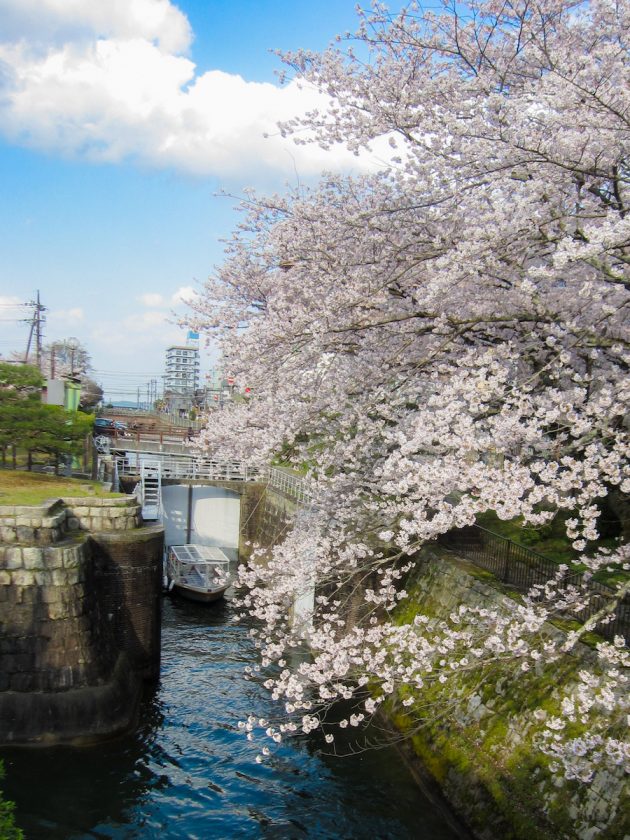
Biwako canal with cherry blossoms, a short walk from Hachise’s machiya properties in Otsu
Bringing back Otsu’s machiya townhouses through renovation
It has been two years since Hachise first set its sights on Otsu Hyaku-cho. Steven Huang of Hachise’s Global Marketing and Sales Team, points out that the move was in part a matter of timing—as Kyoto’s real estate market had become saturated, it made sense to look at neighboring areas with unexplored potential. But for a machiya specialist, Otsu is a treasure trove, with both the integrity and numbers of machiya homes in the area being relatively high. “Many kyo-machiya [machiya found in Kyoto] were lost in the massive fire that resulted from the 1864 Kinmon Incident, and so most that we see nowadays were built between the Meiji Period and the first half of the twentieth century. Machiya houses in Otsu did not experience disasters on such a scale as in Kyoto, and that is why you can still find many that date as far back as the early 1800s.”
“The most distinctive feature of typical Otsu-style machiya,” Steven notes, “is that they have wider frontages than the narrow, so-called “eel bed” style of Kyoto’s kyo-machiya. That is because Otsu was one of the areas under direct control of the Edo shogunate, and was exempt from the heavy land tax [that was calculated based on the width of the street frontage]. This also lends them a more spacious feel.” Four of Hachise’s sophisticated, renovated residential machiya properties are on offer in Otsu Hyakucho, with additional properties due to appear on the market in spring 2020.
All of the homes are walking distance from some of the area’s highlights, including the cherry tree-lined Biwako Canal, Miidera Temple, and a little further away, a marina.
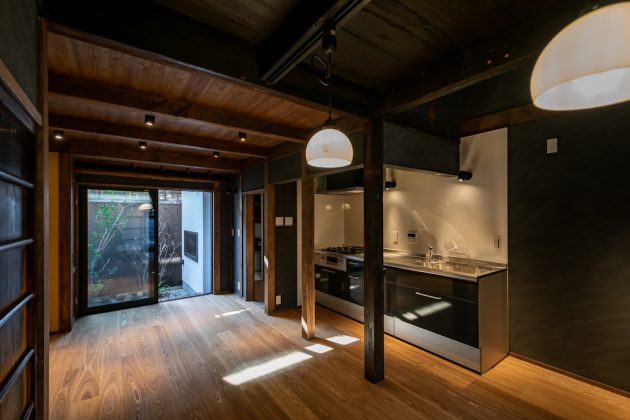
Hachise’s renovated property near Miidera Temple.
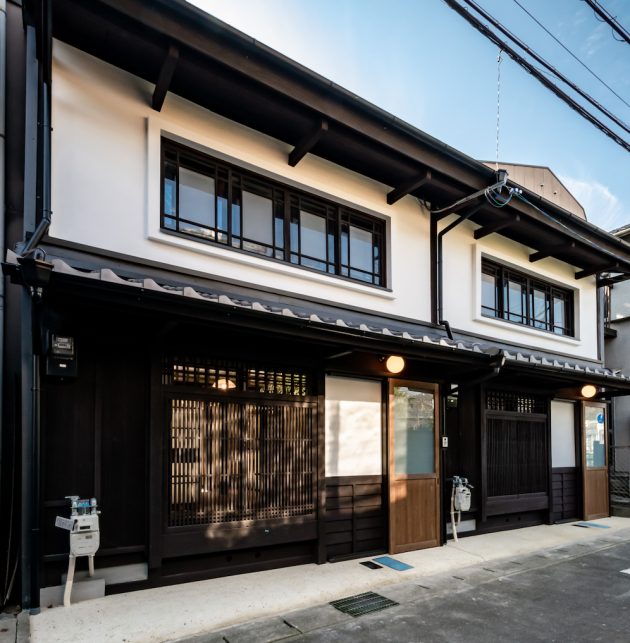
The “moon & sun” townhouses are located right by the canal.
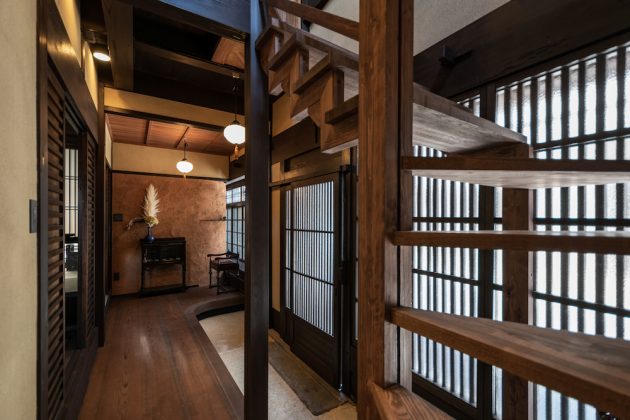
Hachise’s renovation philosophy lies in bringing the original elements of these homes—from the exposed wooden beams and clay walls, right down to the antique glass in the doors—to the forefront. The modern furnishings are then made to complement rather than diminish this old-time charm, carefully selected with neutral colors and drawing on traditional motifs. Each home has a quaint courtyard garden designed to be enjoyed from multiple rooms. Since such homes traditionally allowed little light to come in, skylights and larger windows have been installed. Fresh tatami matting—with one property featuring the chic, square Ryukyu style that has made a comeback in recent years—and custom-made fusuma sliding doors also bring the Japanese-style spaces in these homes up-to-date.
With these characterful properties, Hachise is lending a hand to Otsu’s regeneration project in the way they know best. The restorations have been a great morale-booster for local residents and businesses who care deeply about the future of their city, and they offer irresistible opportunities for newcomers to immerse themselves in the culture of this hidden corner of Japan while enjoying all the benefits of contemporary living.
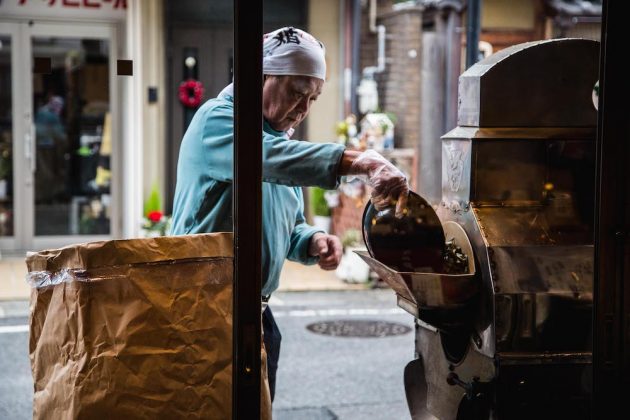
Green tea being roasted outside Nakagawa Seiseido
Business as usual in Otsu Hyaku-cho
Despite the difficulties Otsu has faced, simply strolling the streets one can already see the first signs of regeneration taking root, and in places you may not necessarily expect to find them. The city is home to a number of so-called shinise—generations-old businesses— that have seen some changes of late. One of the shinise that still trades in Otsu Hyaku-cho is Nakagawa Seiseido, a tea purveyor established in 1860. Most tea varieties carried by the store are locally sourced and single origin: testament to how Nakagawa Takeshi, the fifth-generation owner values the deep-rooted ties between his business and the local tea farmers.

Fifth-generation owner of Nakagawa Seiseido, Nakagawa Takeshi, and his wife
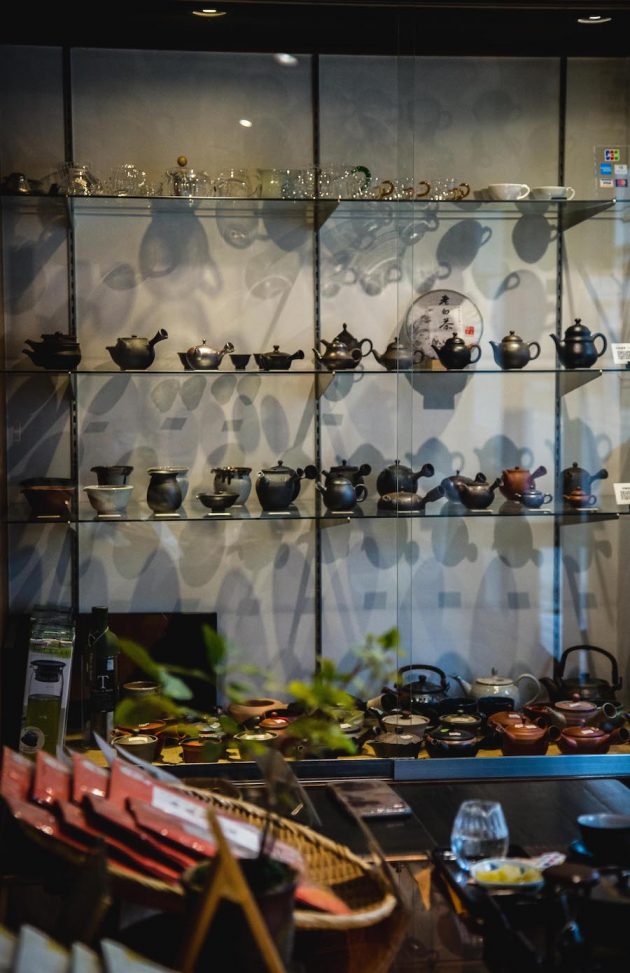
An array of teapots at Nakagawa Seiseido tea shop
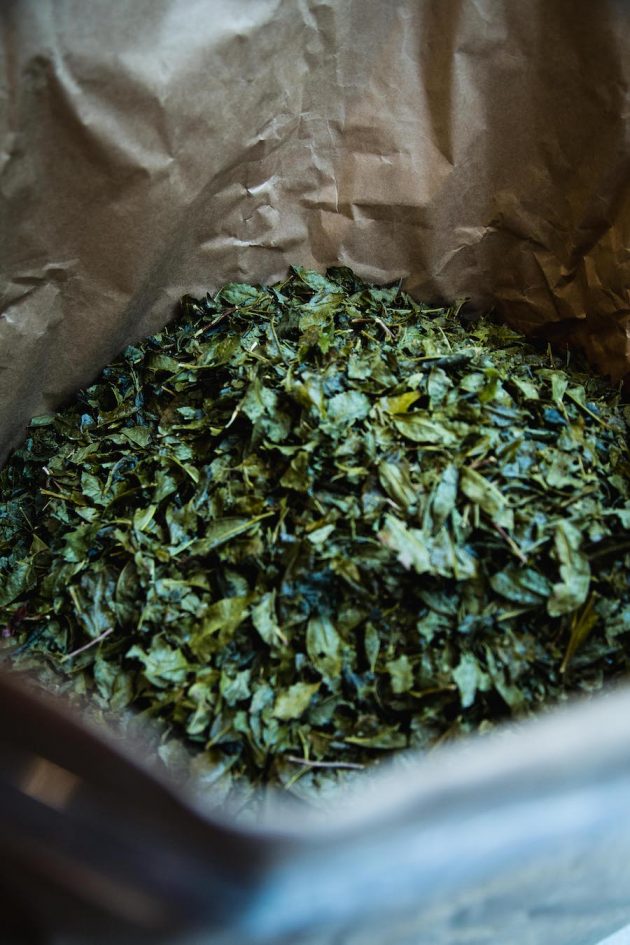
Nakagawa Seiseido sources Shiga-grown tea
“We still have trading relationships that are over a century old. I hear some farmers even have a passed-down family precept that instructs them to sell only to Nakagawa.” The long history of this business sheds light on the salience of Shiga-grown tea as a valuable export product of the region, despite the emergence of much larger production centers in other parts of the country. The sophisticated quality of the products—and the smell of hojicha being painstakingly prepared in the tea-roasting machine outside of their store—attracts many tea fanatics as well as local customers, young and old, to Nakagawa Seiseido today. Nakagawas-an himself holds a deep and palpable passion for tea, which reflects in his sincere interactions with his customers in finding a brew that matches their taste. Shinise like Nakagawa Seiseido reveal the ties of trust and loyalty that link the people who sustain a traditional business.
Another venerable business located along the former Tokaido is the confectionery store, Mochihyo. The name is a permutation of the word for pounded rice cakes (mochi), and Hyosuke, believed to be the founder who started peddling these sweets in the mid-1700s. Besides the much-loved staples of daifuku and mikasa, rice and flour-based cakes with sweet bean filling, customers can find an array of mochi with seasonal flavors that 8th generation owner Umemura Shinji has developed over the years. He does not shy away from incorporating flavors that one would not traditionally associate with Japanese confectionery, such as apple, Earl Grey tea and pistachio.
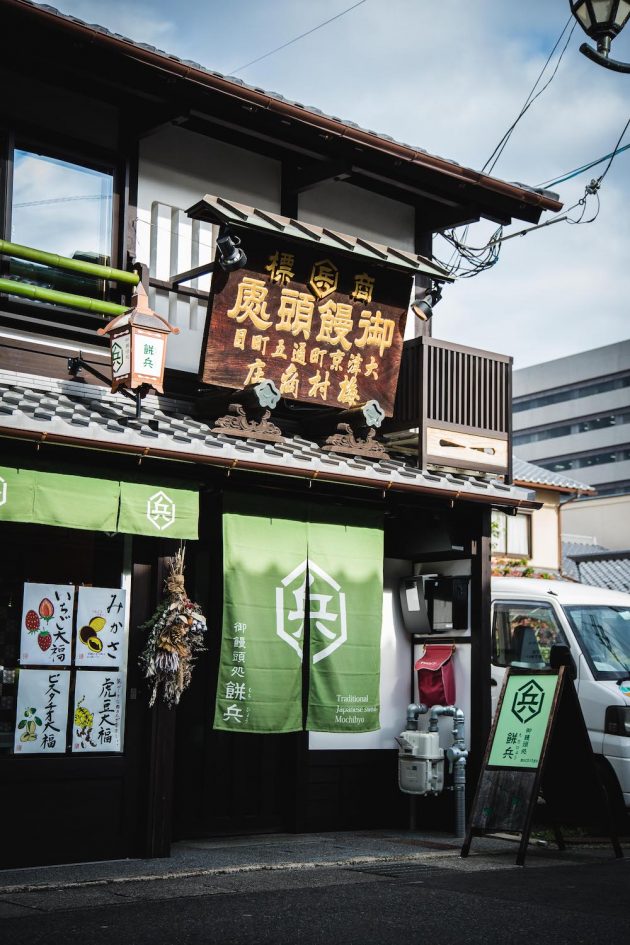
Mochihyo traditional sweet shop
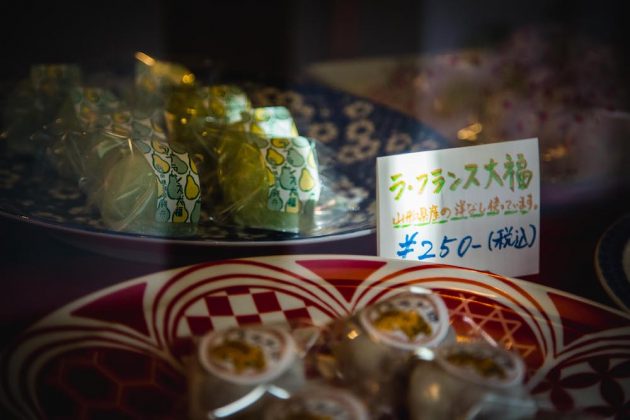
“La France” Daifuku sweets on sale at Mochihyo
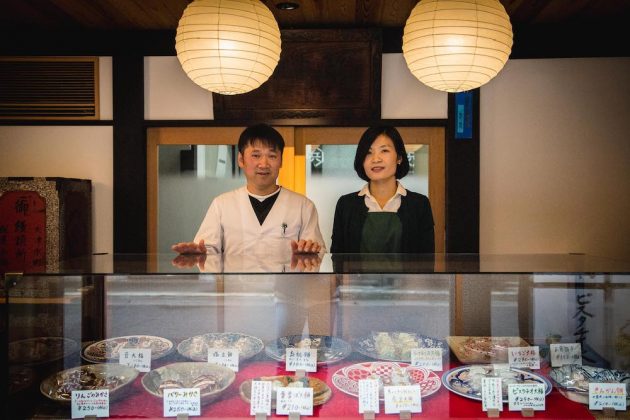
Mochihyo owner Umemura Shuji and his wife
Such establishments as Mochihyo often face pressure from peers to honor the legacy of their ancestors, dismissing such experiments as frivolous. Umemura-san has few qualms about his innovations: “It is true that a business that has been passed down over 250 years is a profound heritage to have inherited, but I think it is important to consider myself a pioneer at the same time.” He is starting to see these adaptations to modern tastes pay off. The shop has undergone a sleek renovation but also pays tribute to its past; its large, old calligraphic sign-board still stands proudly above its lime-green noren curtain. “Before my father passed away, he told me: ‘The pertinence of old ways will fade. Changing tastes will only be perceptible to those who are currently living in this time, so do as you please.’”
The question of maintaining traditional practice and implementing change in pursuit of contemporary relevance is frequently contemplated by the last remaining professional Otsu-e artist, Takahashi Shozan. Otsu-e is an art form that developed at the height of the Tokaido as a counterpart to the ukiyo-e, “floating world pictures” that also became popular around this time. These often whimsical creations were painted by street-side artists to be sold to travelers as affordable souvenirs. “At any given time, the artists kept about 300 designs in their repertoire,” Takahashi explains. “As soon as one design went out of style, they would introduce a new one. That is how Otsu-e painters kept up with the changing trends, and this is what I do now.”
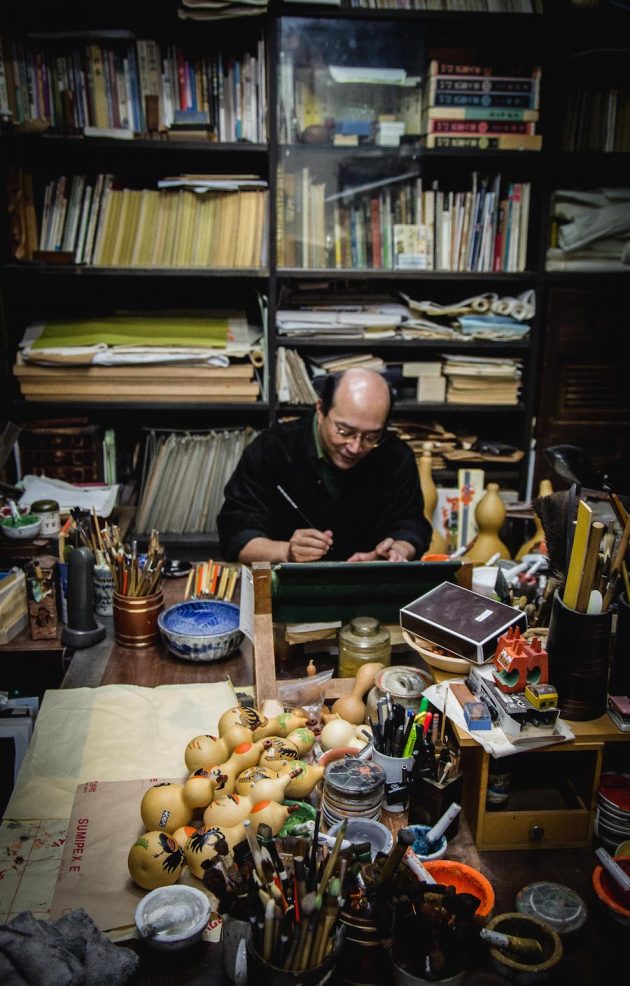
Otsu-e painter Takahashi Shozan in his workshop
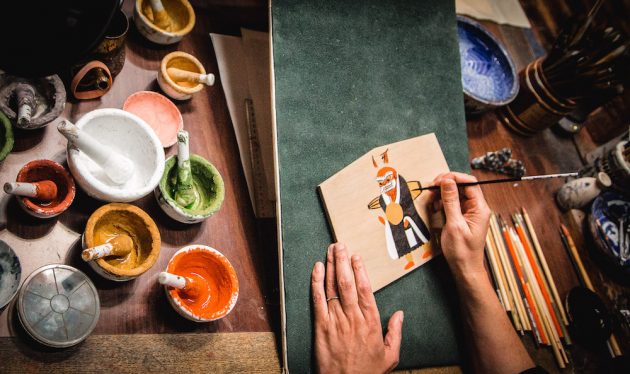
Painting process of the “Oni no Kannenbutsu (Praying Oni)”
Intended originally for mass production, these paintings were rendered in few colors and often with crude technique, and as such were not highly valued. But more recently, many people in Japan are rediscovering the unique charm of the genre and Takahashi suspects this is fueled by interest from avid enthusiasts of Japanese art overseas. “Interestingly, most of the best-preserved examples of Otsu-e are found overseas. There is a tendency for we Japanese to reconsider the value of certain things we take for granted when they attract attention from foreign cultures, just as they start to disappear.” Takahashi took part in an Otsu-e exhibition in Paris last spring, and is hopeful that more opportunities will begin to present themselves much closer to home.
Nakagawa Seiseido: www.seiseido.com
Mochihyo: www.mochihyo.com
Takahashi Shozan: www.otsue.jp
This article by Hinako Yukawa is the second in a four-part series in partnership with Hachise on machiya and innovation in traditional Japanese architecture. To view Hachise’s properties in Otsu Hyaku-cho, visit hachise.com/otsumachiya/
See part one: New Life for Kyo-Machiya
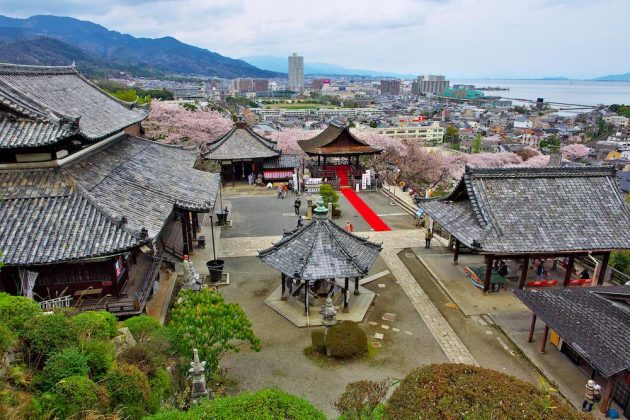
Miidera Temple. Courtesy of Lake Biwa Visitors Bureau
Otsu Attractions
• Witness up close a procession of 13 hikiyama floats parading through the heart of the city at Otsu Festival, taking place this year on October 11th.
• Usually in August, the famous Biwako Fireworks light up the sky above Japan’s largest lake. This year however, the sparks will fly on November 6th, due to the Olympics taking place over the summer months.
• With departures from Otsu Marina, Biwako Kisen and other companies offer cruises that tour Lake Biwa and the small islets.
• With a history that spans well over a millennium, Miidera Temple is one of Shiga’s most important temples and a lesser-known cherry blossom spot. A 15-minute walk from Miidera Station.
• The picturesque town of Sakamoto, home to Hiyoshi Taisha Shrine and Kyu-Chikurin-in Temple and gardens, is just a 13-minute train ride from Miidera Station. From here you can hike or take the cable car up Mt. Hiei.
See also: The Sacred Sites of Otsu
Featured in KJ97: Next Generations. Available to order now.


